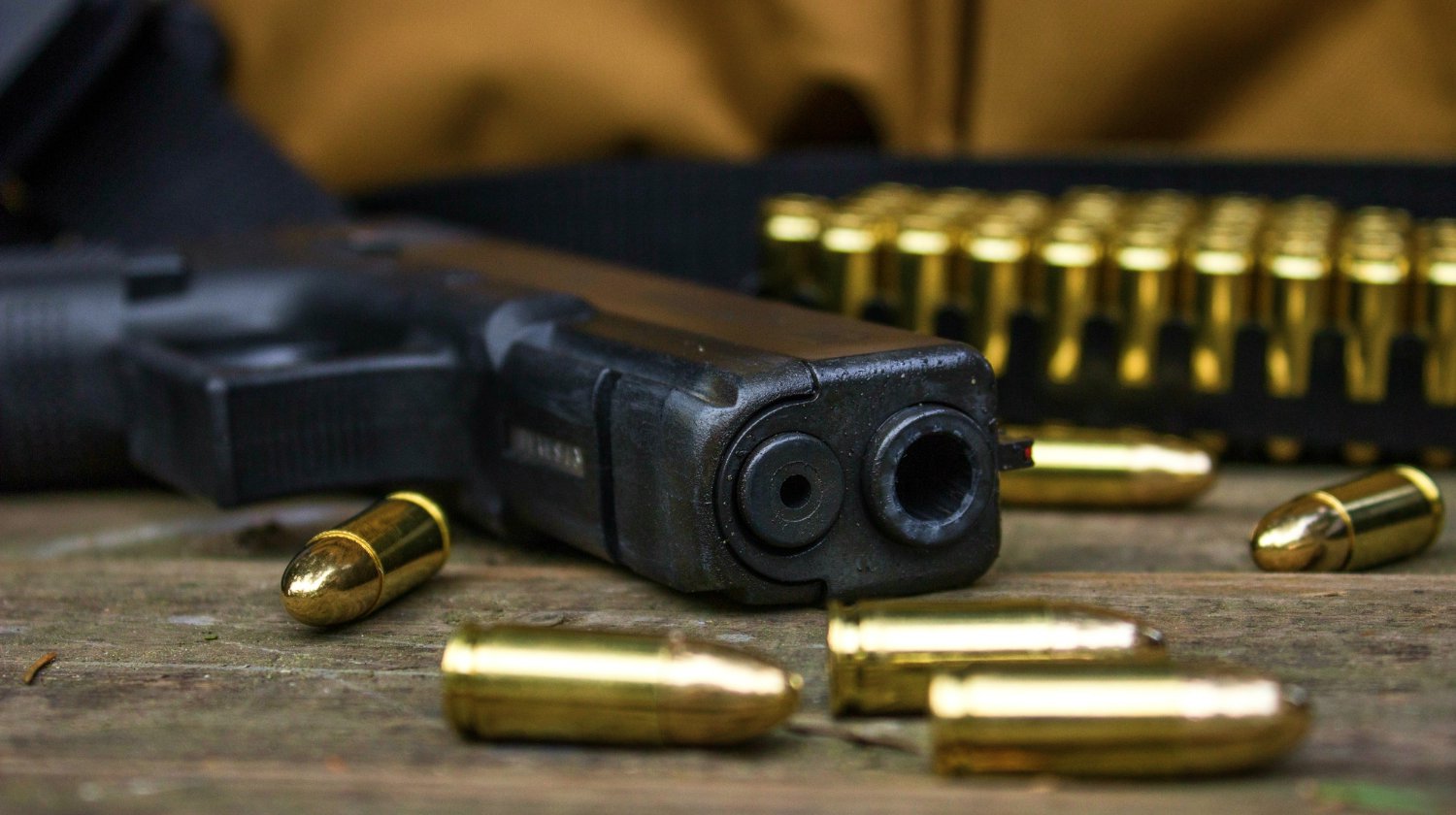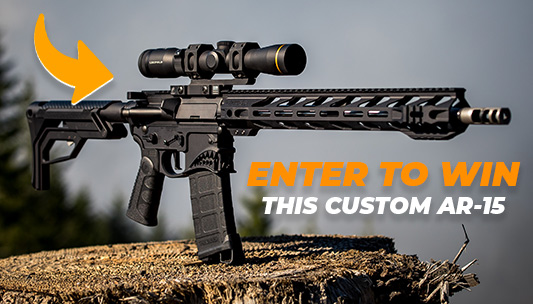Accessories & Gear
Ammo Lingo: Decoding What’s On The Store Shelf
A Gun Carrier reader asked for an explanation of what the abbreviations on the end of ammunition boxes mean. It’s a great question, as it’s not uncommon to encounter store clerks who don’t know, and possibly dangerous to inadvertently purchase the wrong kind. Knowing what those acronyms mean helps a shooter be a confident shopper who spends their hard-earned money on exactly the ammo they need.
Published
2 years agoon
By
Eve Flanigan
Expand your knowledge in ammo lingo and know the meaning of acronyms and bullet terminology to help you as a gun owner.
RELATED: Ammo Lingo Part II: Understanding +P Ammunition
In this article:
- Learn the Abbreviations
- Jacket and Bullet Types
- Grain Weight
- Case Types
- Boat Tail Bullets
- Brand Confusion
- That Little Book Can Prevent Headaches
- The KISS Principle
Ammo Lingo | Increase Your Ammunition Literacy
Learn the Abbreviations
One of our readers recently asked for an explanation of what the abbreviations on the end of ammunition boxes mean. It’s a great question, as it’s not uncommon to encounter store clerks who don’t know, and possibly dangerous to inadvertently purchase the wrong kind.
Knowing what those acronyms mean helps a shooter be a confident shopper who spends their hard-earned money on exactly the ammo they need.
Since most new shooters are likely purchasing ammunition for a new self-defense handgun or a rifle intended for home defense or deer hunting, this article includes terms used for those guns but excludes shotguns.
Here’s a Rosetta Stone, of sorts, for ammo terms and abbreviations:
Jacket and Bullet Types
HP or JHP = Hollow Point or Jacketed Hollow Point. These rounds are generally a bit more expensive and designed for defensive and hunting use.
A hollow point opens up and “mushroom” or fracture after a short distance of penetration. The purpose is to expend all its ballistic energy within around 12 inches of impact.

.40 HP and .40 FMJ
The “jacketed” term indicates the bullet itself, which may be lead or a combination of metals, is coated with a layer of metal, usually copper. This improves feeding in semi-autos and controls expansion of the hollow point.
Many gun carriers consider HP/JHP ammunition the responsible choice for self-defense, as it’s less likely to pass through an initial target and into a next. This is NEVER a guarantee in a real-life, dynamic situation.
An example is an attack in which the best target area is something like a knee joint if that’s all that’s visible or all that can responsibly be targeted.

Ammo lineup
FMJ or TMJ = Full Metal Jacket or Total Metal Jacket. Most common and generally less expensive than HP, FMJ/TMJ ammunition has a usually copper coating over the entire bullet.
This is the round of choice for most people for practice and plinking. In general, jacketing helps feed consistency (dependability) in semi-auto pistols and rifles.
SP, JSP, and Wadcutter = “Soft Point, Jacketed Soft Point,” and Wadcutter refer to bullets with exposed or only partially jacketed lead. These are most commonly seen in ammo intended for revolvers, such as 38 Special, 357 Magnum, and 45 Long Colt.
Wadcutter ammunition is less common today but still a good choice for shorter-range match shooting as it’s highly accurate.

Three types of soft-point: soft-point, jacketed soft-point, and wadcutter
These are common ammunition types. There are variations on these themes, such as jacketed hollow points that have a small polymer plug inside the bullet (which is visible).
There are HP rounds which are more for fragmentation than simple expansion.
Grain Weight
Grain weight, which isn’t relevant to any modern measure except bullets, is also provided on the box end. Heavier bullets may, at first glance, seem a better choice for self-defense or hunting, as they generally achieve better penetration.
However, heavier types of bullets also travel more slowly, which decreases the overall impact. It comes down to a matter of personal preference.
Grain weight is far less important than reliability. Not every firearm cycles every round dependably.
Grain weight, and while we’re discussing choices, cost, are not always reliable indicators of performance. It’s the interface of your firearm’s construction with that of the cartridge that counts.
Practice with your defense or hunting round of choice before you need it.
RELATED: What You Need To Know About Buying Ammo Online

Tac match with HP compared to X-Tac with FMJ bullet
Case Types
Rifle and pistol ammunition generally has one of three casing types—brass, aluminum, or steel. The case is, physically, the biggest component of your ammunition and holds the primer, powder, and bullet in place.
Case material can make a difference in the performance and/or longevity of your gun.
Generally, brass-cased ammunition is preferred, and most accurate. It’s also most widely acceptable by gun manufacturers.
Aluminum cases may or may not be okay by owner’s manual standards. In some market phases, aluminum-cased ammunition, usually found in FMJ, is more affordable.
As of this writing and in my local area, aluminum-cased pistol ammunition is more expensive than some brands of brass-cased FMJ.

Case materials in order of quality: Brass, Aluminum, Steel
Steel-cased ammunition is not a good recommendation for most firearms as it, unlike brass and aluminum, is the same or nearly the same hardness as the inside of your chamber, extractor, and feed ramp, if there is one. Thus steel cases can cause premature wear that, over time, negates the lower price of this ammo.
It is common and acceptable to run ammunition with steel-case in many foreign rifles with steel cartridges, though you can't expect pinpoint accuracy. The AK and SKS platforms are the primary examples of steel case-friendly rifles.
Boat Tail Bullets
“BT” is commonly seen on the box end of rifle ammunition. This is the one trait the consumer can’t see with the naked eye.
“Boat tail” refers to the taper on the tail end of the lead bullet. This typically has a jacket and always into the top of the case.
Think of these bullets as having a shape more like canoes than having a flat bottom, as other bullets are. The taper enhances flight stability and penetration.
It’s nothing to fret about; if anything it’ll improve your experience.

Boat tail ammo
Brand Confusion
Different companies may have different terms—and thus box-end abbreviations–for very similar products. For example, some companies use the letter “n,” as in nose, to signify the shape of the business end of the bullet.
Such variables can trip up even experienced gun shop workers. If you’re unsure, ask to see the box, and read it, or search the company’s website.
Most ammunition makers do an excellent job with online product descriptions.

Ammunition acronyms: So many acronyms
That Little Book Can Prevent Headaches
Your gun’s owner’s manual, which you can search online if you don’t possess, is the best starting point for choosing ammunition.
Some manufacturers recommend only American-made, brass-cased ammunition that is guaranteed to meet certain manufacturing standards. Some brands even deny warranty claims if ammunition other than what the manual recommends.
The KISS Principle
This article covers the most basic components of ammo lingo. Like any new language, there are dozens of variables and application-specific terms you can learn best by doing.
Buyers should avoid getting caught up in spending a fortune on ammunition that’s touted as extra-special in any way — for accuracy, expansion, or the tactical trick of the season. Your best bet is to purchase something that has a reasonable price and in accordance with the recommendations found in your gun’s owner’s manual.
Some foreign-made ammunition is notorious for causing malfunctions in some firearms. So long as your life or a long-awaited game trophy isn’t at stake, and assuming the malfunctions aren’t causing a safety issue, consider that ammunition your go-to for practicing malfunction clearances — an important aspect of shooter competence.
The biggest investment shouldn’t be in ammo, but in time spent practicing the fundamentals of marksmanship. Happy and safe shooting.
The more guns interest you, the more it requires you to increase your awareness about the matter. This especially includes knowledge in ammunition and understanding the different acronyms and gun jargons.
It's a great help to know your way inside a gun store when you're trying to purchase ammo.
Do you have any relevant information about ammo to share with us? Let us know in the comments section below!
UP NEXT:
- The Best Way To Store Your Ammo
- Unlimited Ammo Guiding Gun Owners in Reloading Techniques
- The Gun Show Loophole Explained
Editor’s Note: This post was originally published on July 29, 2016, and has been updated for quality and relevancy.
Originally posted on September 17, 2019 @ 9:00 AM


Battle for Gun Rights in 2025: Key Wins and Ongoing Challenges ️

Myths About Revolvers: Unraveling the Truth in 2025

Master the Basics: How to Prepare for Your First USPSA Match This Spring

Everyday Carry Knife: Why Concealed Carriers Shouldn’t Go Without One

Handgun Designs: From Historic Flintlocks to Modern Innovations

Cleaning Firearms Made Easy: Post-Holiday Range Tips for Gun Owners




Pingback: Ammo Lingo Part II: Understanding +P Ammunition - Gun Firing
Pingback: Ice Bullet Mythbusters: Are Ice Bullets Effective? – Holster Gun
Pingback: Ice Bullet Mythbusters: Are Ice Bullets Effective? – weaponproduct.com
Pingback: Ice Bullet Mythbusters: Are Ice Bullets Effective? – ForYourSurvival
Jerome Auerbach
August 5, 2016 at 1:17 PM
What about frangible rounds?
Eve Flanigan
August 8, 2016 at 1:16 AM
Great idea for a new article. Frang isn’t on most store shelves so I didn’t include it here. I’m a big fan of it for certain applications.
Ted
August 5, 2016 at 12:02 PM
Well done. It amazes me how many folks dont know what they are buying and in this case it could be a matter of life or death.